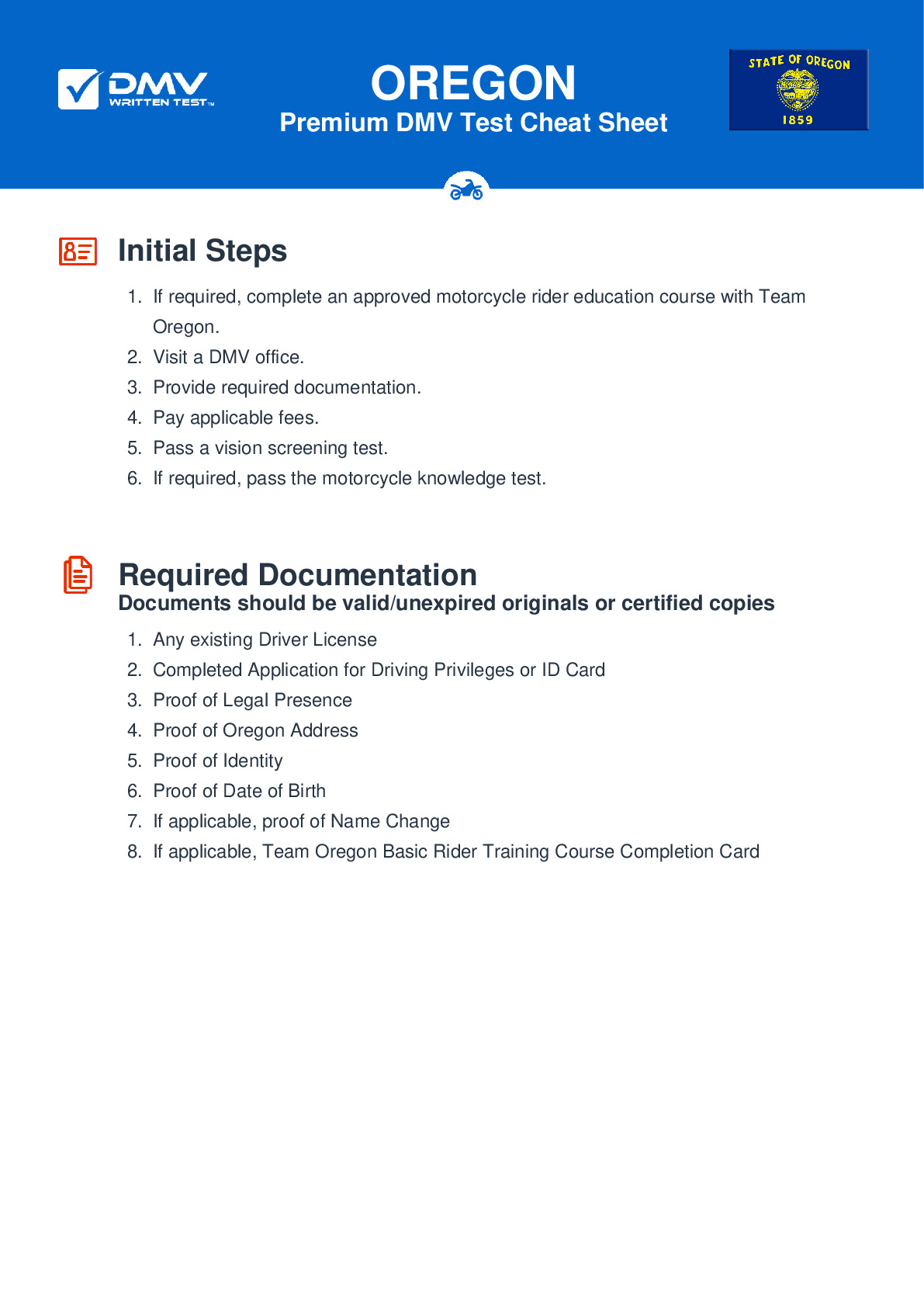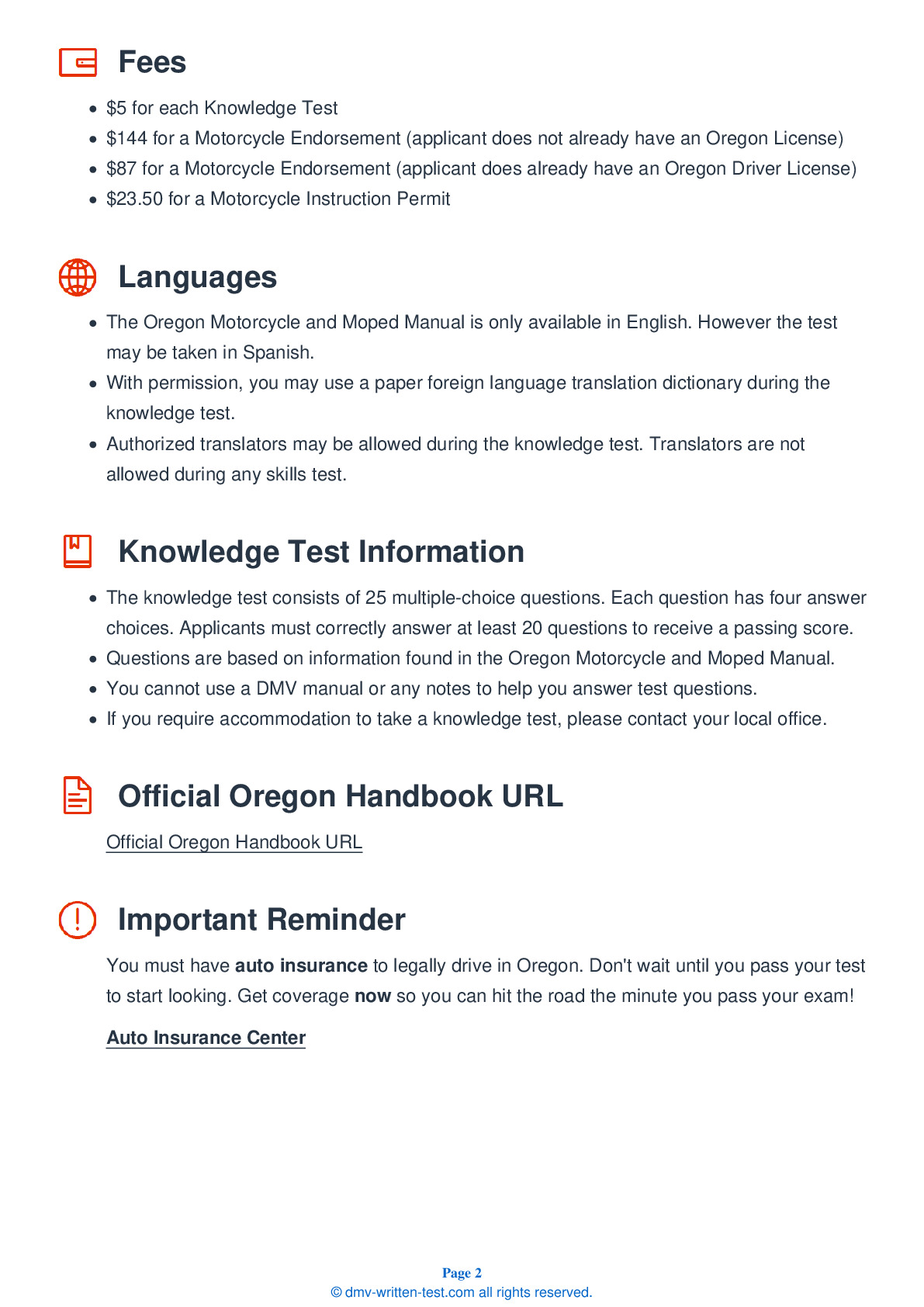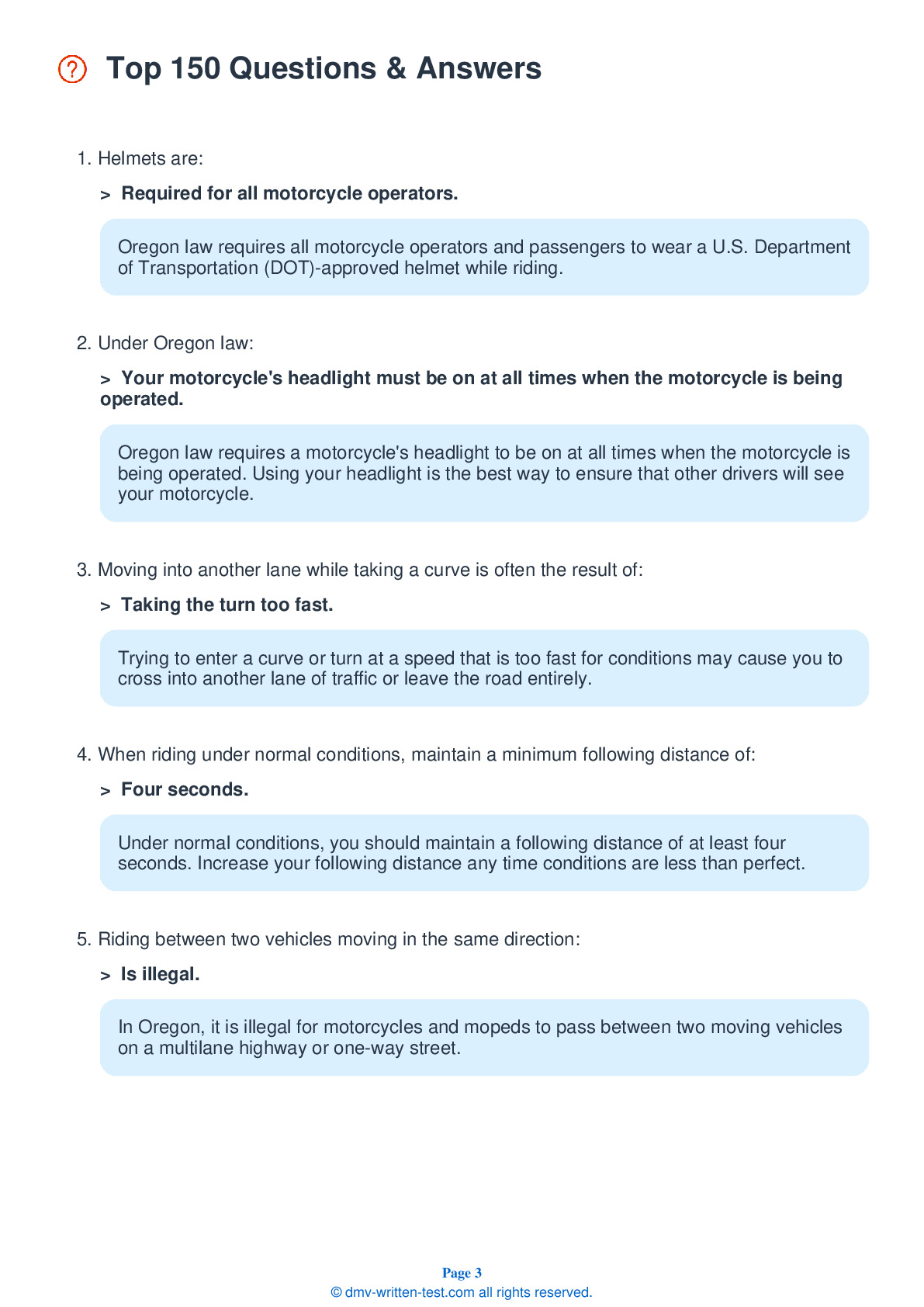2025 Oregon Motorcycle Permit Test 8
The following questions are from real DMV written motorcycle permit tests. These are some of the actual permit questions you will face in Oregon when getting your motorcycle learners permit. Each motorcycle theory practice test question has three answer choices. Select one answer for each question and select "grade this section." You can find this button at the bottom of the drivers license quiz. For a complete list of questions and answers for Oregon please visit https://cheat-sheets.dmv-written-test.com/en/oregon/motorcycle.
Number of Tests
Number of Question
Passing Score
13. Riding at night is usually:
Explanation
Riding safely at night is challenging because it is harder to see and be seen than it is during the day. The absence of normal shadows and light contrasts makes it harder to judge distances.
14. Which of the following should you inspect during a pre-ride check?
Explanation
Before setting off on any ride, you should do a thorough check of your motorcycle. Inspect the tires, oil and fluid levels, headlight, tail light, turn signals, brake light, clutch and throttle, mirrors, brakes, and horn.
15. If a friend has been drinking alcohol and wants to drive, which of the following should you not do?
Explanation
There are several strategies you can use to prevent someone from driving while under the influence of alcohol. You can arrange another way for them to get home, involve them in other activities to slow their pace of drinking, use any available excuse to stop them from leaving before they are sober, and get other friends involved to intervene as a group.
16. Passing and being passed when riding a motorcycle is not much different than when driving a car. However:
Explanation
While the basic techniques for safely passing and being passed are the same as when driving a car, visibility is more critical when riding a motorcycle. The smaller size of a motorcycle makes it easier for you to disappear into another vehicle's blind spot, or for the driver to fail to notice you even if they are able to see you.
17. Anti-Lock Braking Systems (ABS) are designed to:
Explanation
Some motorcycles are equipped with an Anti-Lock Braking System (ABS). ABS is designed to prevent skidding and wheel lock-up when motorcyclists are stopping in straight-line, panic situations. ABS operates when maximum pressure is applied to both the front and rear brake controls. If electronic sensors detect the possibility of a wheel lock, brake hydraulic pressure is released then re-applied to maintain maximum braking effectiveness.
18. Of the following, which should you not do to improve your safety when riding at night?
Explanation




